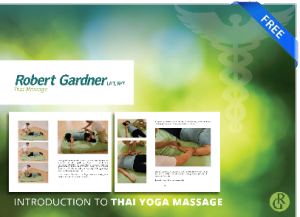Gravity
As my practice grows and I gain skill I notice how I’ve whittled away at the unnecessary. Much like a stone in a river my edges are worn and I learn to work with gravity, not against it. Using muscles to fight a client, isn’t as easy as pulling a client along and allowing them to let go in their own time. In yoga class and in Thai massage the goal is often tricking the client or student into letting go.
Partner yoga or what’s sometimes called acro yoga changes the relationship with gravity on the receiver allowing someone to allow their spine to fall open. As I continue to learn small amounts I’ve begun using it with clients to great benefit. The change in gravity is a great boon you can’t achieve otherwise. Letting go is easy once you change the client’s position in gravity. In its own way it’s a brilliant use of physics to accomplish a goal easily.
Much like inversions in yoga are beneficial you get the same benefit from acro yoga. The difference is that you’re tractioning the spine and allowing the receiver to release into the inversion much like someone lets go in a Thai massage session. If you’re used to yoga the sensation isn’t so unfamiliar but for the uninitiated it feels like freedom. With a good secure base flying you you feel like you can finally let go. Gravity helps you, nature supports your release instead of feeling like you’re pulled down into a slump.
Merry Christmas. Let’s hope more people learn that gravity is their friend in the new year.

